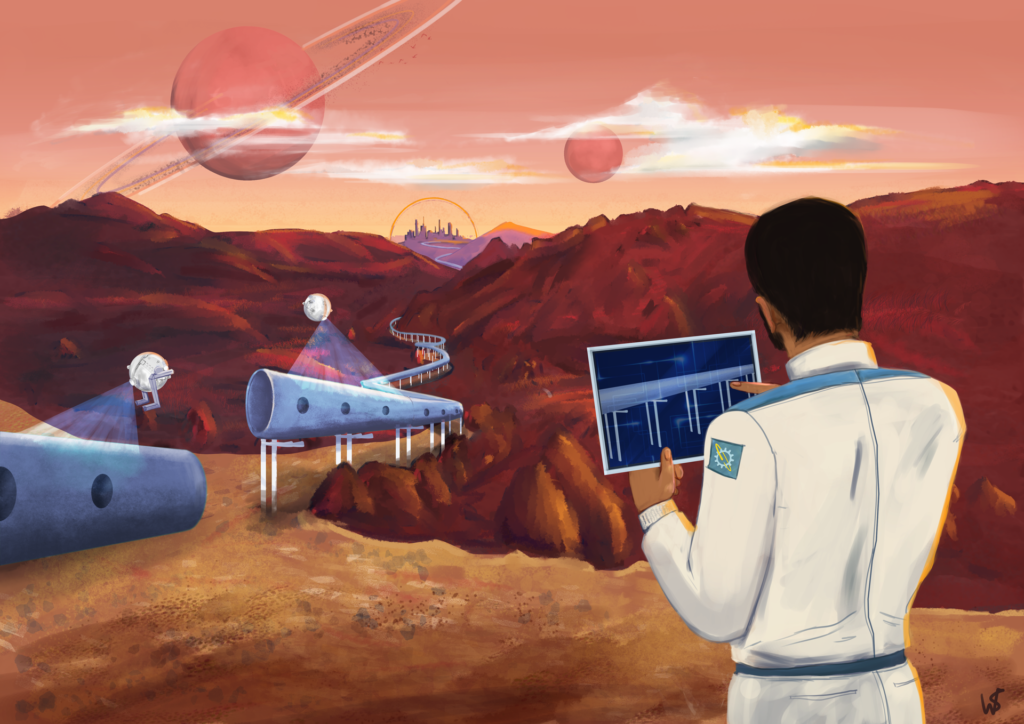As we look at things that impress us technologically we also have a certain trepidation, because we’re told that robots are going to take our jobs. “Yes, the internet is wonderful,” we may say, “but robots, I don’t want those.”
I don’t mean to make light of this because robots are going to take a lot of jobs. They’re going to take a lot of blue collar jobs, and they’re going to take a lot of white collar jobs you don’t think they can take. Already there are robots that can dispense pills at pharmacies. That’s being done in California. They have not made one mistake. You can’t say that about human pharmacists, who are now free to be up front talking to you while the robot fills the prescription.
Much of this is discussed by author Kevin Kelly in his new book The Inevitable, with the subtitle Understanding the 12 Technological Forces that Will Shape Our Future. It’s incredible what robots can do and what they will be able to do.
Automation Really Is Taking Our Jobs
To me, just the fact that one of Google’s newest computers can caption a photo perfectly — it can figure out what’s happening in the photo and give a perfect caption — is amazing. Just when you think “a machine can’t do my job,” maybe it can.
What kind of world is this we’re moving into? I understand the fear about that. But, at the same time, let’s think, first of all, about what happened in the past.
In the past, most people worked on farms, and automation took away 99 percent of those jobs. Literally 99 percent. They’re gone. People wound up with brand new jobs they could never have anticipated. And in pursuing those jobs we might even argue that we became more human. Because we diversified. Because we found a niche for ourselves that was unique to us. Automation is going to make it possible for human beings to do work that is more fulfilling.
How is that? Well, first let’s think about the kinds of jobs that automation and robots do that we couldn’t do even if we tried. Making computer chips, there’s no one in this room who could do that. We don’t have the precision and the control to do that. We can’t inspect every square millimeter of a CAT scan to look for cancer cells. These are all points Kevin Kelly is trying to make to us. We can’t inflate molten glass into the shape of a bottle.
So, there are many tasks that are done by robots, through automation that are tasks we physically could not do at all, and would not get done otherwise.
Automation Creates Luxuries We Didn’t Know Were Possible
But also automation creates jobs we didn’t even know we wanted done. Kelly gives this example:
Before we invented automobiles, air-conditioning, flat-screen video displays, and animated cartoons, no one living in ancient Rome wished they could watch pictures move while riding to Athens in climate-controlled comfort. … When robots and automation do our most basic work, making it relatively easy for us to be fed, clothed, and sheltered, then we are free to ask, “What are humans for?”
Kelly continues:
Industrialization did more than just extend the average human lifespan. It led a greater percentage of the population to decide that humans were meant to be ballerinas, full-time musicians, mathematicians, athletes, fashion designers, yoga masters, fan-fiction authors, and folks with one-of-a kind titles on their business cards.
The same is true of automation today. We will look back and be ashamed that human beings ever had to do some of the jobs they do today.
Turning Instead to Art, Science, and More
Now here’s something controversial. Kelly observes that there’s a sense in which we want jobs in which productivity is not the most important thing. When we think about productivity and efficiency, robots have that all over us. When it comes to “who can do this thing faster,” they can do it faster. So let them do jobs like that. It’s just a matter of — so to speak — robotically doing the same thing over and over again as fast as possible. We can’t compete there. Why bother?
Where can we compete? Well, we can compete in all the areas that are gloriously inefficient. Science is gloriously inefficient because of all the failures that are involved along the way. The same is true with innovation. The same is true of any kind of art. It is grotesquely inefficient from the point of view of the running of a pin factory. Being creative is inefficient because you go down a lot of dead ends. Healthcare and nursing: these things revolve around relationships and human experiences. They are not about efficiency.
So, let efficiency go to the robots. We’ll take the things that aren’t so focused on efficiency and productivity, where we excel, and we’ll focus on relationships, creativity, human contact, things that make us human. We focus on those things.
Automation Really Does Make Us Richer
Now, with extraordinary efficiency comes fantastic abundance. And with fantastic abundance comes greater purchasing power, because of the pushing down of prices through competition. So even if we earn less in nominal terms, our paychecks will stretch much further. That’s how people became wealthy during and after the Industrial Revolution. It was that we could suddenly produce so many more goods that competitive pressures put downward pressure on prices. That will continue to be the case. So, even if I have a job that pays me relatively little — in terms of how many of the incredibly abundant goods I’ll be able to acquire — it will be a salary the likes of which I can hardly imagine.
Now, I can anticipate an objection. This is an objection I’ll hear from leftists and also from some traditionalist conservatives. They’ll sniff that consumption and greater material abundance don’t improve us spiritually; they are actually impoverishing for us.
Well, for one thing, there’s actually much more materialism under socialism. When you’re barely scraping enough together to survive, you are obsessed with material things. But, second, let’s consider what we have been allowed to do by these forces. First, by industrialization alone. I’ve shared this before, but on my show I had Deirdre McCloskey once and she pointed out that in Burgundy, as recently as the 1840s, the men who worked the vineyards — after the crop was in, in the fall — they would go to bed and they would sleep huddled together, and they basically hibernated like that for months because they couldn’t afford the heat otherwise, or the food they would need to eat if they were expending energy by walking around. Now that is unhuman. And they don’t have to live that way anymore because they have these “terrible material things that are impoverishing them spiritually.”
The world average in terms of daily income has gone from $3 a day a couple hundred years ago to $33 a day. And, in the advanced countries, to $100 a day.
Yes, true, people can fritter that away on frivolous things, but there will always be frivolous people.
Meanwhile, we have the leisure to do things like participate in an American Kennel Club show, or go to an antiques show, or a square-dancing convention, or be a bird watcher, or host a book club in your home. These are things that would have been unthinkable to anyone just a few hundred years ago.
The material liberation has liberated our spirits and has allowed us to live more fulfilling lives than before. So, I don’t want to hear the “money can’t give you happiness” thing. If this doesn’t make you happy — that people are free to do these things and pursue things they love — then there ain’t no satisfying you.
Tom Woods, a senior fellow of the Mises Institute, is the author of a dozen books, most recently Real Dissent: A Libertarian Sets Fire to the Index Card of Allowable Opinion. Tom’s articles have appeared in dozens of popular and scholarly periodicals, and his books have been translated into a dozen languages. Tom hosts the Tom Woods Show, a libertarian podcast that releases a new episode every weekday. With Bob Murphy, he co-hosts Contra Krugman, a weekly podcast that refutes Paul Krugman’s New York Times column.
This article was published on Mises.org and may be freely distributed, subject to a Creative Commons Attribution United States License, which requires that credit be given to the author.








